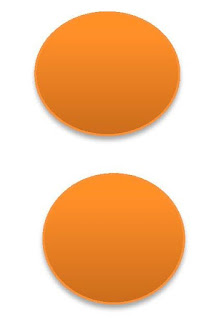LESSON PLAN OF DIVISION AS SUCCESSIVE SUBTRACTION
LESSON PLANNING OF DIVISION AS SUCCESSIVE
SUBTRACTION
Subject Mathematics
Grade 2nd
Students` Learning Outcomes
- Recognize and use of division symbol “÷”
- Recognize division as successive subtraction.
- Divide numbers within the multiplication tables with remainder zero.
- Solve real life problems involving division.
Information for Teachers
- The process to divide certain number of given things in equal parts is called division.
- Division is the shortest method to represent repeated subtraction.
- The number to be divided is dividend like as 15.
- The number which divides is divisor like as 3.
- The number which comes out at the end like’5’ is the quotient (say: ko-shunt)
- As fractions are also based on the concept of dividing one whole into parts, refer to that concept as well.
- As times tables are used to solve division tables, it will be useful to remind students of how things like match stick buttons etc. were put into groups of 2, 3 or 4, and putting the things equally into separate groups is called division.
- While teaching the lesson, the teacher should also consult textbook at all steps where and when applicable.
Material / Resources
Writing board, chalk / marker, duster, 15
buttons, 20 sweets, oranges or apples
Introduction
Activity 1
- Show two oranges to students and ask them, how can we give these two to two students?
- And if a student replies, ‘Give one to each’ ask them, how can we give 2 oranges to these two students?’
- Help students if they can`t give the answer.
- Show them, when there were two oranges, each of the 2 students got 1 orange. That means 2 – 2. Now there are 2 left, how many will each of the 2 students get?
- Once they get the answer, tell them that this is a division, taking a number of things and distributing them equally among different people.
Development
Activity 1
- Introduce students to the division sign.
- Draw two circles on the board, one above the other. Don`t draw the line in the middle yet, just leave space for it.
- Now tell students that these are the oranges that we just divided between two students.
- Ask them, ‘How can we show that these oranges are not together but separate? We can draw a line in the middle.
- Tell them that this is
 the division sign.
the division sign. - Give an example, as; 4 oranges divided among 2 students will be written like this:
- 4 ÷ 2
- Then put the “= “sign (4 ÷ 2 = -----) and ask the students, how many oranges did each one get? Then write 2 in front of it (4 ÷ 2 = 2)
Activity 2
- Tell the story;
- Stitch the ‘15’ buttons on the table.
- How many buttons Alia want to stitch on each shirt? (Expected answer would be as; 3)
- For how many shirts ‘15’ buttons will be sufficient?
- If students are unable to answer then ask one student to draw ‘15’ buttons on the board.
- How many buttons did she stitch the 1st shirt? (Expected answer would be as; 3)
- Cross the ‘3’ buttons and ask the students to count the remaining.
- How many buttons did she stitch the 2nd shirt? (Expected answer would be as; 3)
- Cross ‘3’ more and count remaining
- She stitched ‘3’ buttons on the 3rd shirt. Now cross ‘3’ more and count the remaining buttons.
- She stitched ‘3’ buttons on the 4th shirt.
- She stitched ‘3’ buttons on the 5th shirt.
- Ask students to count remaining buttons.
- Deduce with the help of students ‘15’ buttons are sufficient for ‘5’ shirts.
- Remind them this can be written in short equals to ‘5’.
- Repeat this activity with match sticks by dividing the students into different groups / teams.
Activity 3
- Tell students that we don`t always have objects such as buttons or oranges to see how we can solve a division problem, we (usually) use multiplication table.
- Show them the sums done in activities 1 and 2 and how they can be solved by following table.
- Provide them the work sheet.
- Ask students to work out the sums individually and share answers with their partner.
- Instruct students to tell you if their answers are different, help them to correct the mistakes.
- Give more such sums to students for more practice.
Activity 4
- Tell the story:
- ‘put ‘20’ sweets in a plate on the table.
- Ask in how many children we want to distribute? (Expected answer would be as; 5)
- How many sweets will each child get?
- Ask ‘5’ students to come in front of class.
- Ask them to take ‘1’ sweet one by one and till no sweet in the plate.
- Ask how many sweets each student has? (Expected answer would be as; 4)
- Ask one student to solve question on the board, as such; 20 ÷ 5 = 4
- Tell them this process can be written as;
Sum up / Conclusion
- Division is the shortest way to represent repeated subtraction.
- Division is the inverse process of multiplication.
- ‘÷’ is the sign used for division.
Assessment
- Ask the following questions;
Follow up
- Ask them to convert following sums into their story and solve, as like;
24 ÷ 4 = --------
2 ÷ 10 = --------
- Ask them to write this story on chart paper.
- Ask students to think of more situations in daily life where division is used. For example, into how many number of periods a school day is divided?
- Can you equally divide 7 in 3 groups; if no, explain why?
- Ask the students to solve the questions given in their textbook.




























Comments
Post a Comment